Top Benefits, Types, Features of HR Software, and Things to Consider
The foundation of every company is its employees, whether they’re humans or robots. A great idea is worthless unless it’s supported by efficient workflow processes involving a qualified and dedicated team. In fact, finding reliable and competent staff and establishing productive work practices can be considered the most difficult task for any new company on its way up.
There was a time not so long ago when people were skeptical about Human Resources Management Systems, regarding them as a pricy luxury with no practical use. Those times have passed, and today both small and large ventures have reconsidered their initial points of view. Let’s start from the beginning and get a formal introduction to HR software.
A Brief Introduction
A Human Resources Management System (HRMS) is software covering numerous HR functions in one package. It’s designed for overall business potency improvement by automating the workforce, recruitment procedures, and payroll and compliance management practices. It has proved to be highly cost-effective in a long-term perspective.
Most companies unfamiliar with HRMS suffer from the problem of strained, sometimes chaotic, workflow. By implementing automated HR software, companies can take the edge off complicated decision making related to comprehensive progress evaluation, administrative peculiarities and general daily task routines.
Generally, HR products are comprised of the following contents:
- A recruitment unit set for vacancy circulation handling (including announcements preparation and distribution)
- A dedicated chunk for applicant preview, preselecting and competency evaluation
- A clear task management system for a 360-degree overview of employee workloads
- A wide range of monitoring, rating and estimation tools, particularly useful in large and remote teams. The majority of HR systems offer either off-the-shelf or customized roles and permissions wrapped in user-friendly, intuitive interface designs.
Top Benefits of HRMS
You may wonder how much difference HRMS would make compared to a team of HR specialists. The answer is probably in a scale of the areas covered and automated, producing flawless procedures, unbiased by human errors and misjudgments. However, a detailed list of the implied benefits is probably more convincing.
- Optimized recruiting flow.
The elaborate recruiting instrument set simplifies opening announcement preparation and distribution across different job platforms and boards, followed by the process of appropriate applicants’ preview and evaluation.
- Real-time updates of employee load and skills upgrades.
The core function of any HR system is in the centralization of employee information, by creating profiles including detailed personal and professional characteristics, and assigned tasks and areas of responsibility. This way, the system serves the purpose of wise task delegation as it combines features of a task manager and optimal staff selection.
- The closed cycle of workforce management.
An HR system levels the need for separate spreadsheets and email threads for tracking your staff’s workload and progress. By accumulating all HR-related operations within a single app, tasks can be assigned and their execution statuses followed or best participants incentivized with the click of a button.
- Effective collaboration.
Modern HR systems usually include a dedicated communication tool, ensuring quick access to all updates, comments on tasks, or shared ideas. The best tools provide a searchable database of enclosed working files accessible from various devices and support unlimited material sharing among team members.
- Qualitative incentive patterns.
The leading cause of job abandonment lies in insufficient job estimation and lack of individual promotion plans. Ensuring efficient tracking of work progress and professional skill upgrades, the system initiates timely employee evaluations and encouragements. Moreover, the system effectively spots negative working trends and patterns to prevent further problem escalation.
- Payroll management.
Best HRMSs can save significant amounts spent on third-party accountants and consultants since they include budgeting blocks for managing employee benefits, deducting unpaid leaves or sick-leaves (based upon agreed conditions), adding travel expenses and confirming tax compliance.
- Employees development programs.
The professional growth of employees is directly linked to the company’s success. Large companies exploit their HR management systems to identify staff training needs and work toward development programs fitting those needs. The involved programs vary from newbies’ training manuals to educational plans for learning the features of HRMS depending on the employee’s company role.
Types of HR software
Since the main system pros are clear, we now need to learn different types of HR management software. Generally, there are three of them:
- Core operation HR systems meet the basic HR management needs of staff tracking, incentive administration, and payroll management. These blocks are usually the most time-consuming and controversial in traditional management companies. Examples of these systems are BambooHR, Zenefits, and UltiPro.
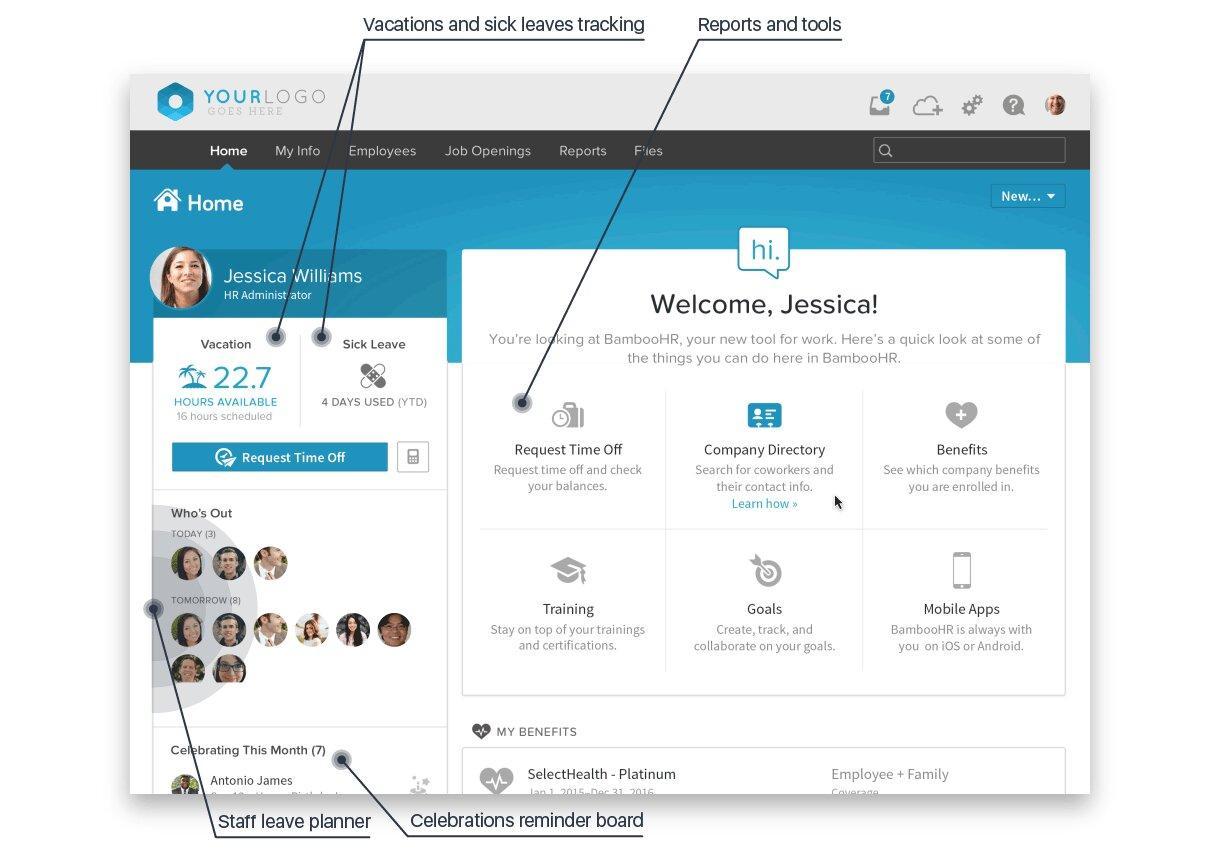 Screenshot from BambooHR
Screenshot from BambooHR
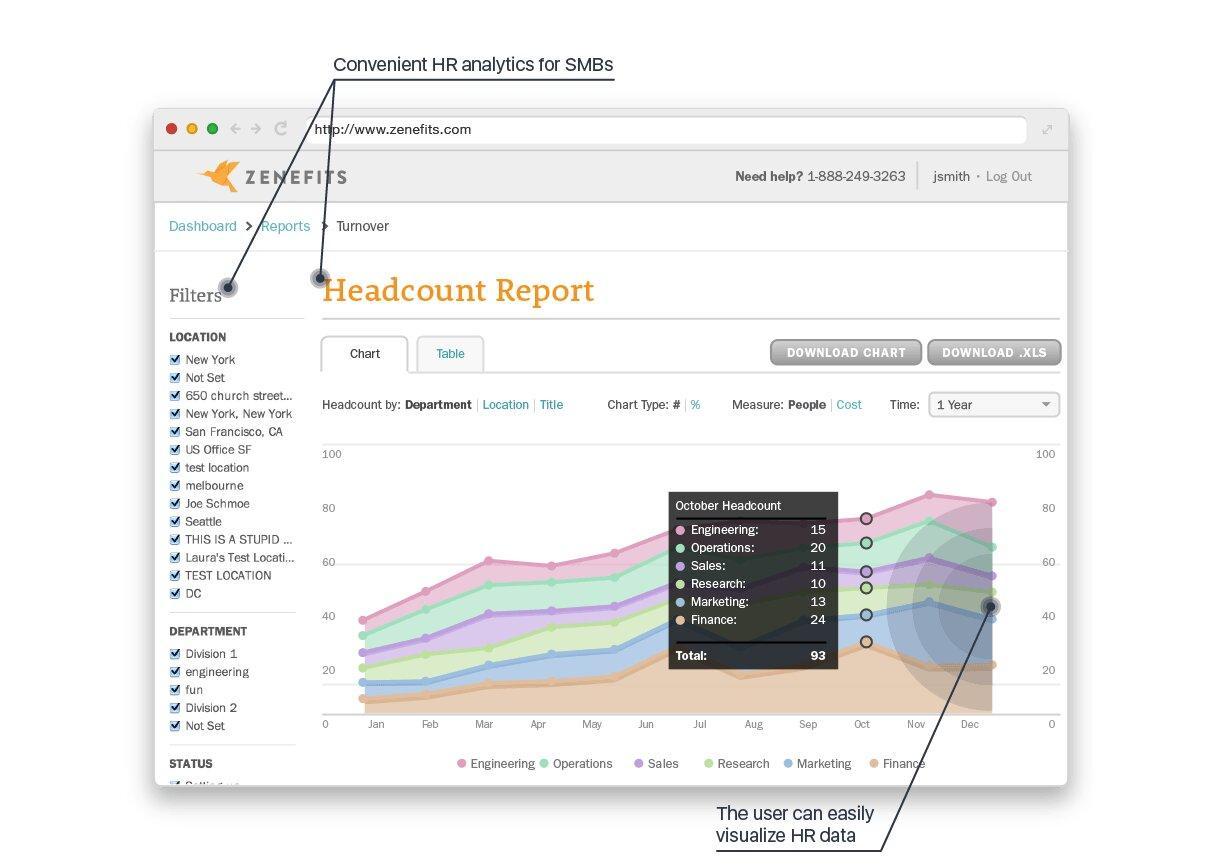 Screenshot from Zenefits
Screenshot from Zenefits
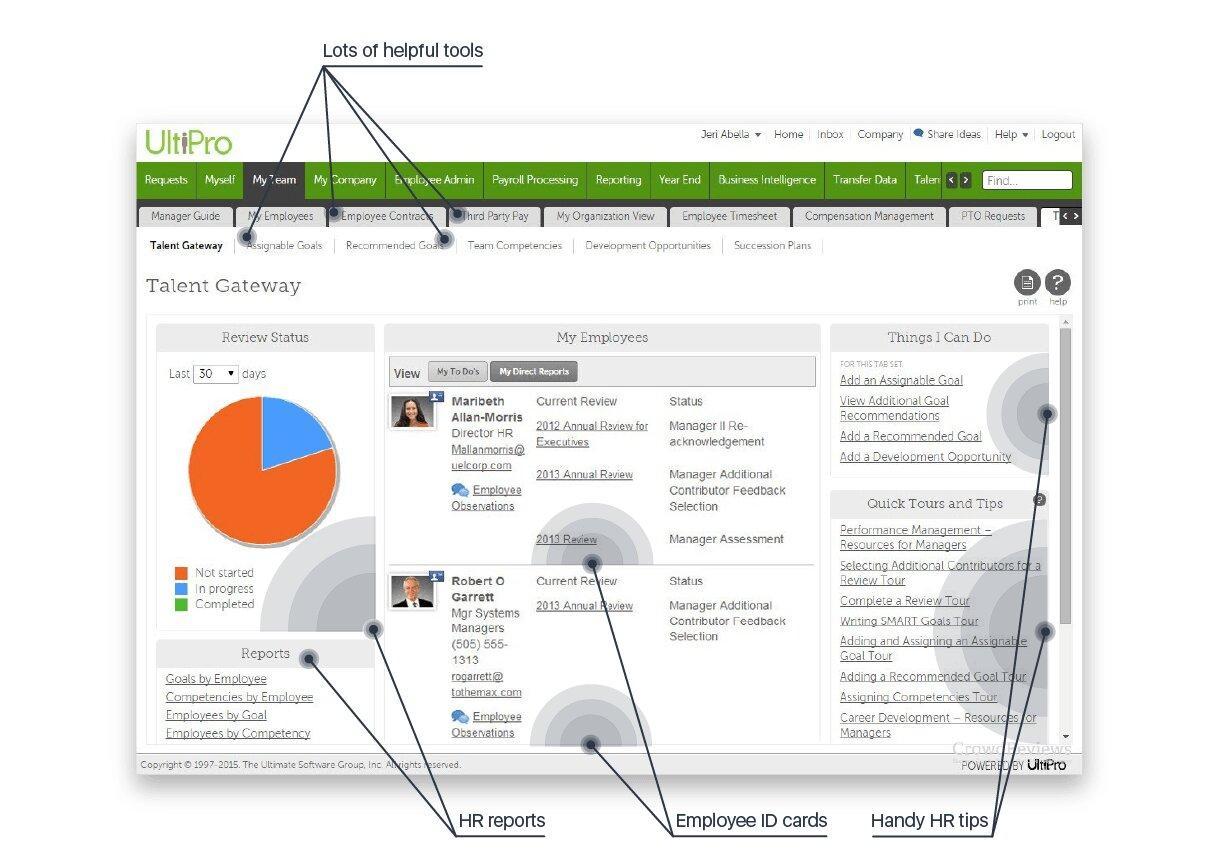 Screenshot from UltiPro
Screenshot from UltiPro
- Strategic HR systems are mainly focused on hiring and helping the company onboard and nurture the brightest minds in the industry. These systems include corporate learning management kits, candidate tracking, recruiting instruments, and working retention patterns. These systems are generally purchased by recruitment agencies and individual professional recruiters. Examples of these systems are Zoho People, Zoho Recruit, and Breezy HR.
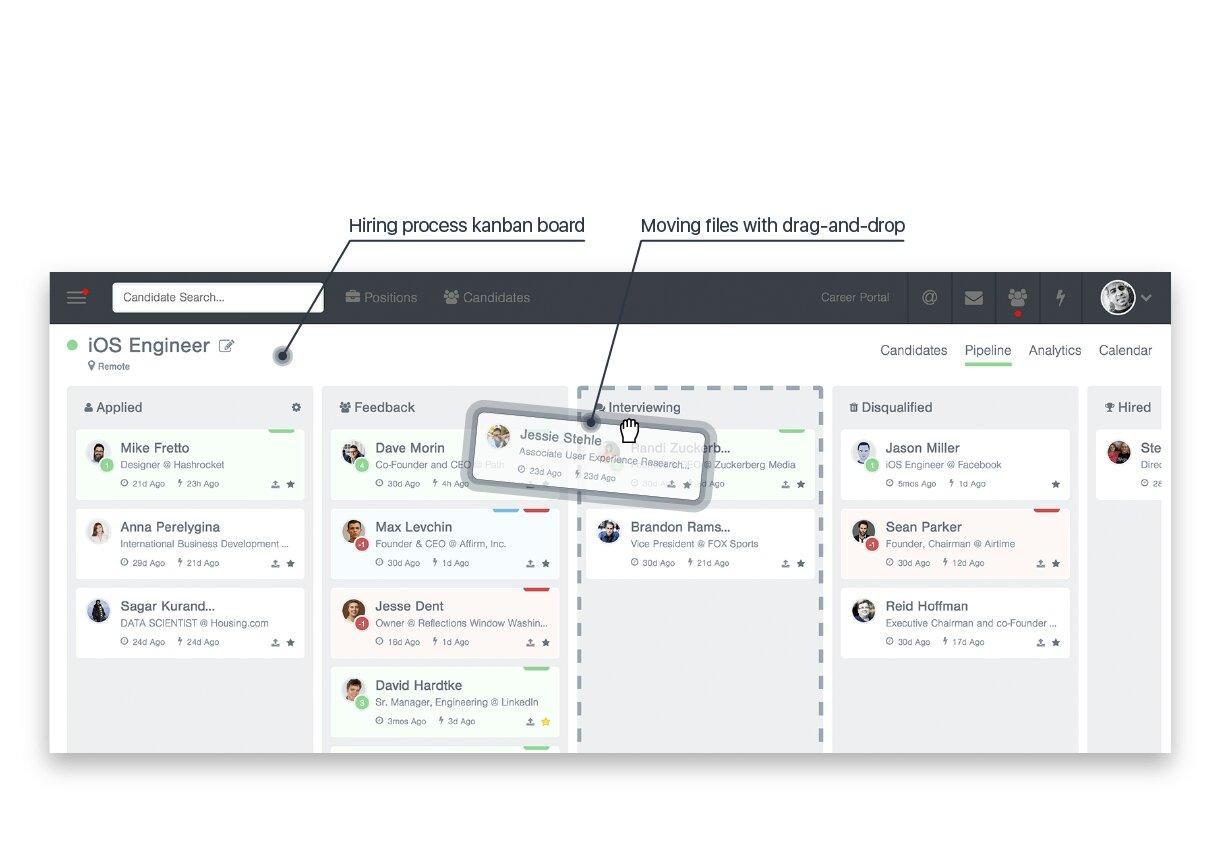
Screenshot from Breezy HR
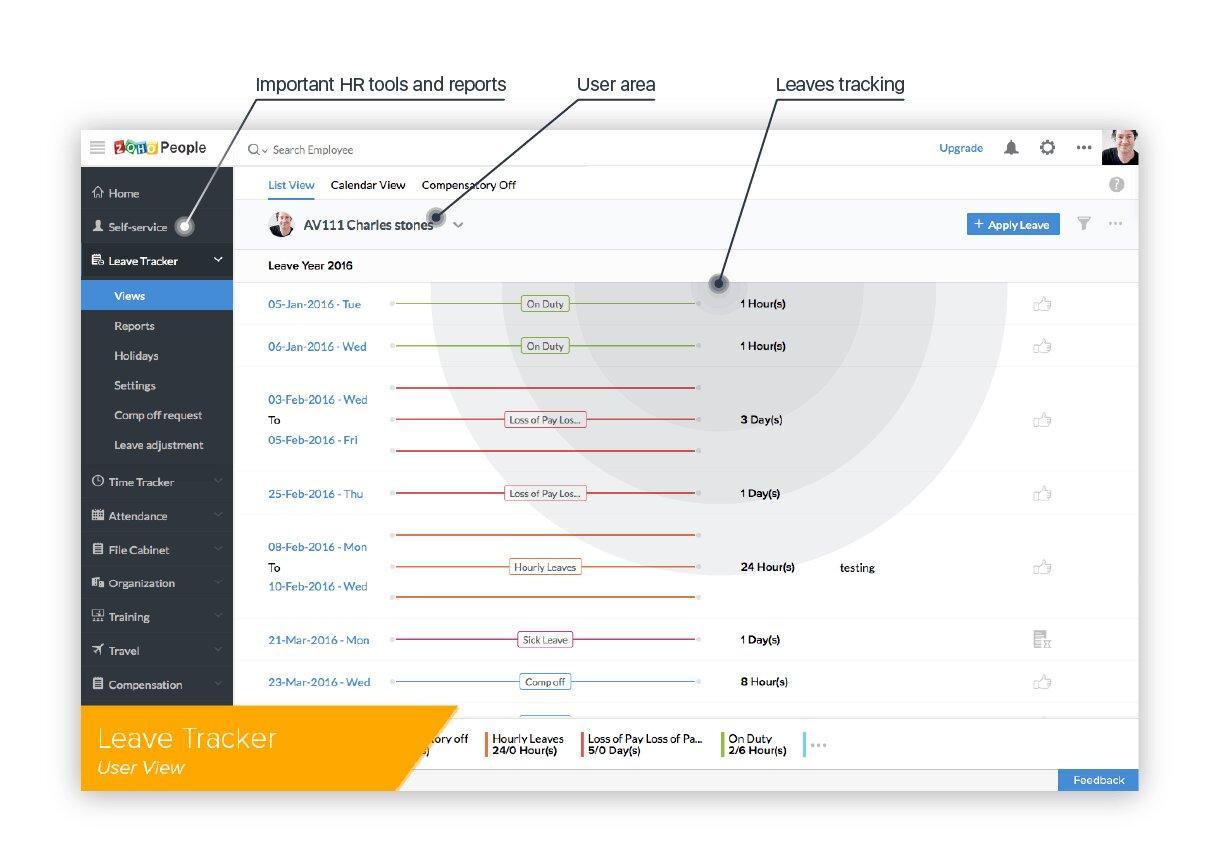 Screenshot from Zoho People
Screenshot from Zoho People
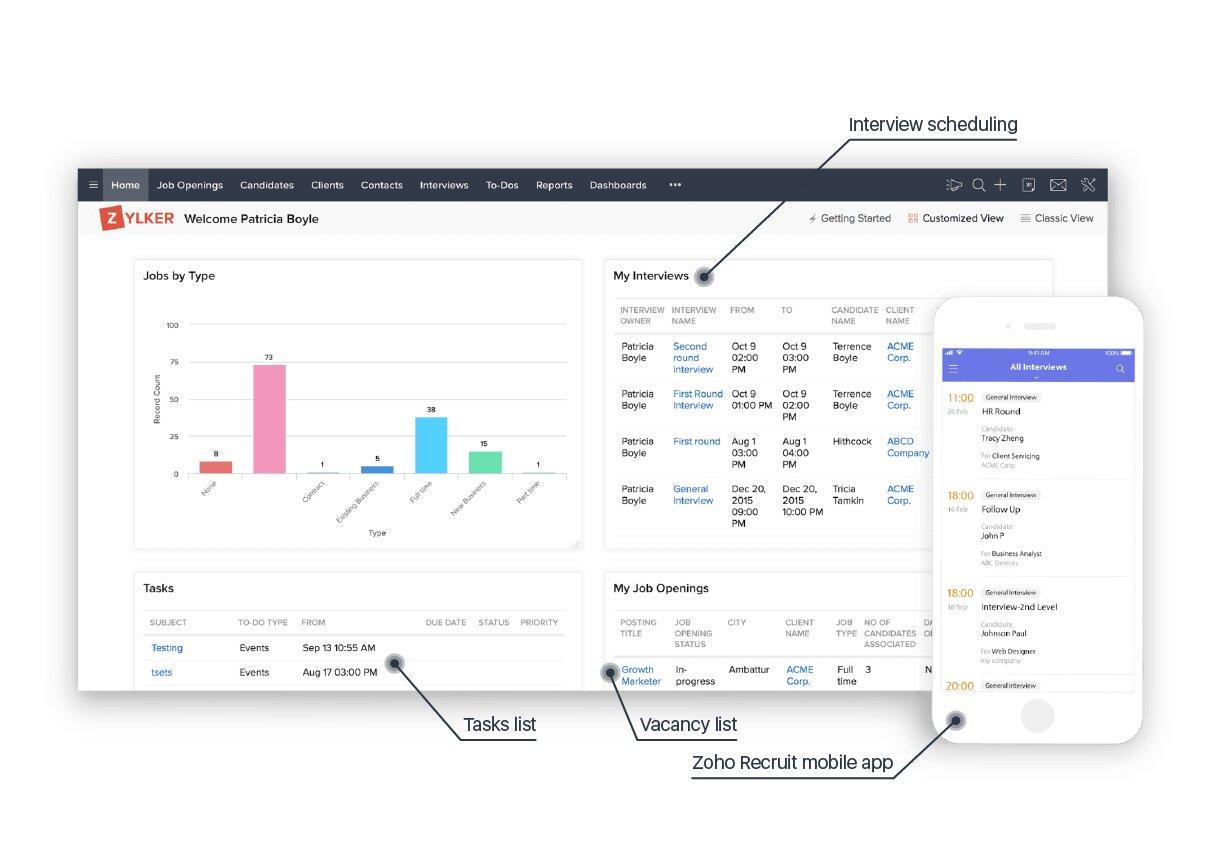 Screenshot from Zoho Recruit
Screenshot from Zoho Recruit
- Full cycle workforce management kits undertake the activities related to existing employees and their performance progress: scheduling and time tracking, load monitoring, attendance reports, and expenses per employee resulting in overall performance evaluation. The system core complies with applicable labor laws and standards and is easily integrated with accounting and BI tools to analyze HR data into informative efficiency reports. These systems are represented by Workday, ADP Workforce Now, and Kronos Workforce Central.
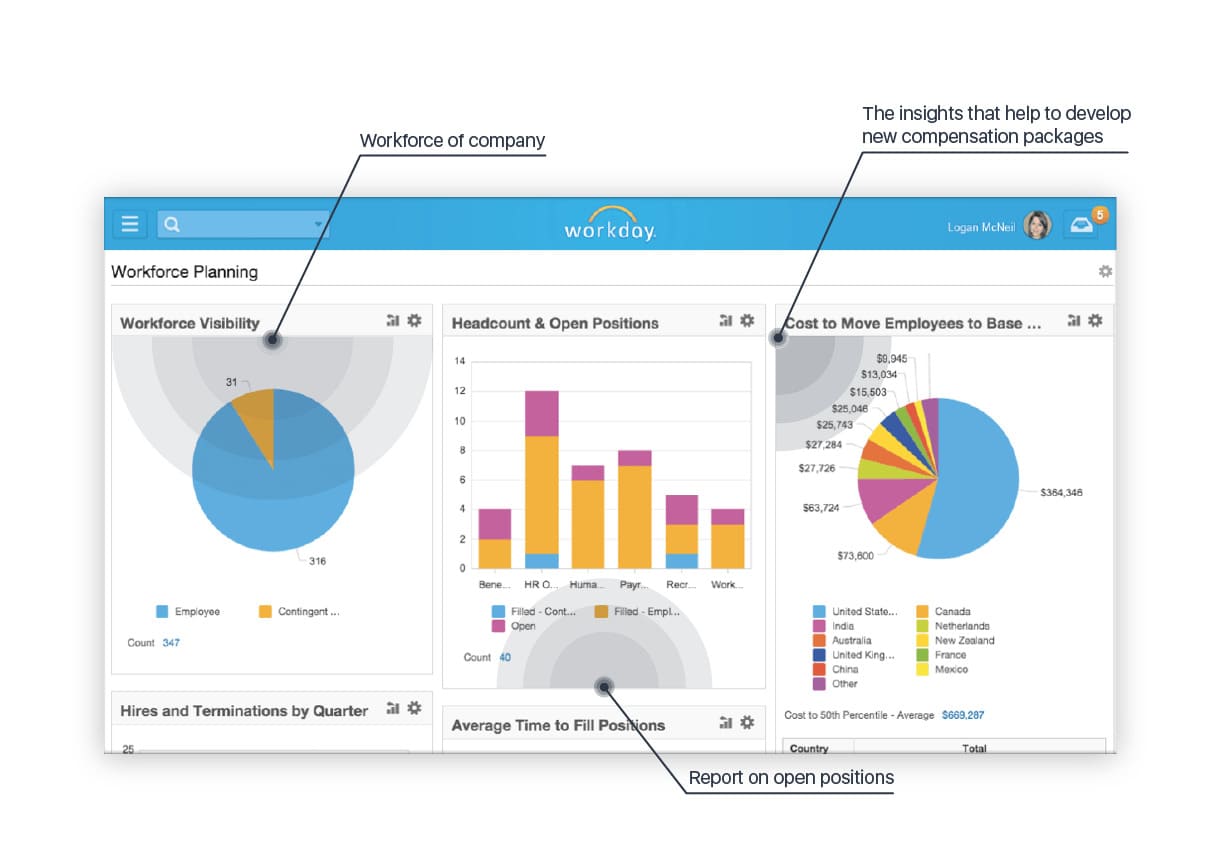 Screenshot from Workday
Screenshot from Workday
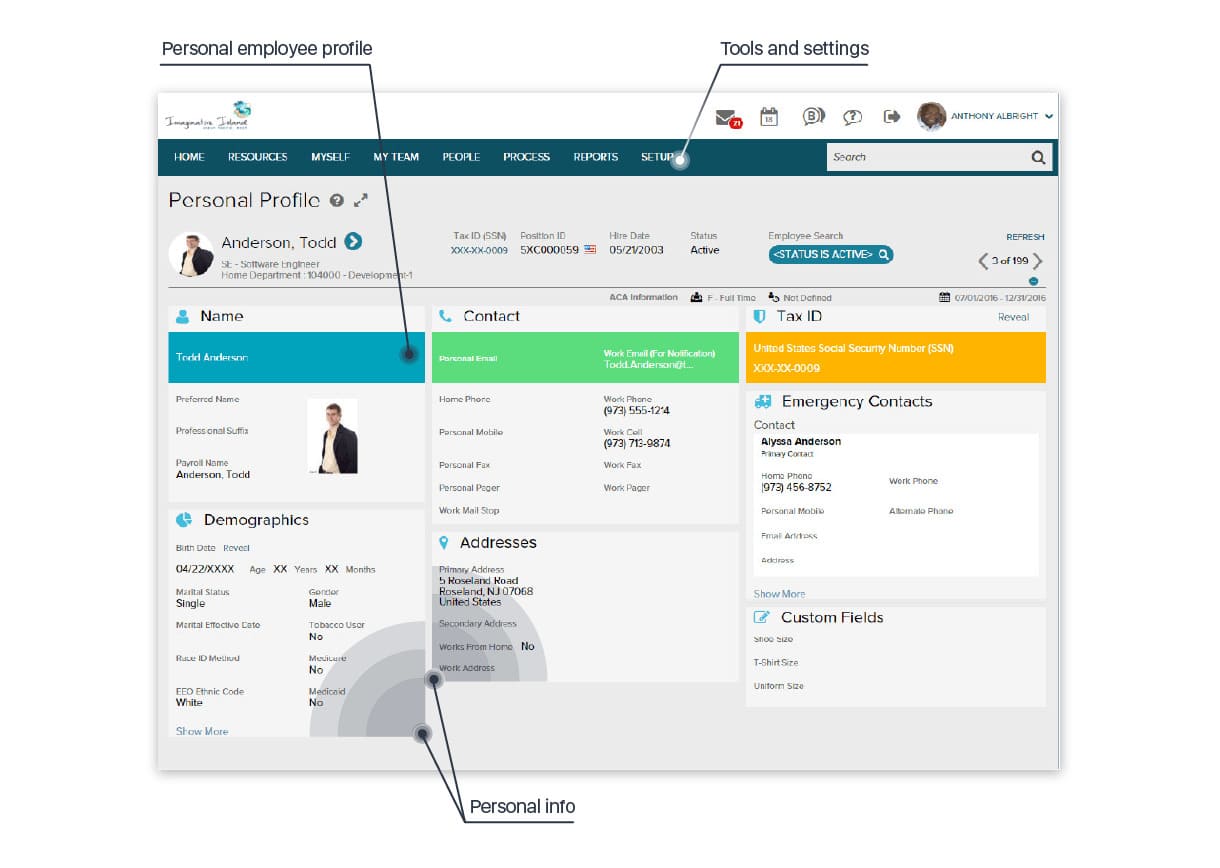 Screenshot from ADP Workforce Now
Screenshot from ADP Workforce Now
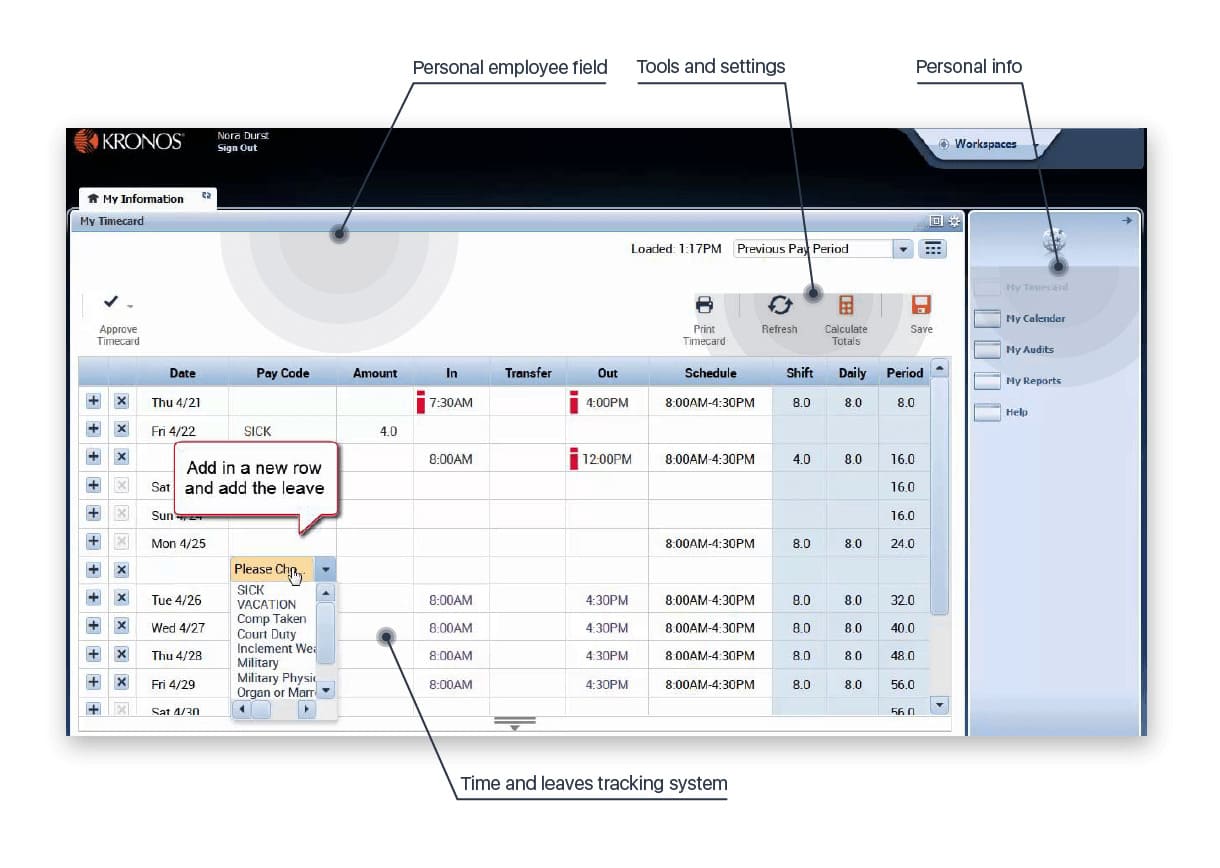 Screenshot from Kronos Workforce Central
Screenshot from Kronos Workforce Central
General Features of HR management systems
System features reflect the system benefits they’re intended to provide. Among the general features, there are:
- Performance management is usually a separate block designed for monitoring workload, tracking task lifecycles and both group and individual performance evaluation. Imagine the staff of 150+ employees (or 500+) with a full daily load. It’s practically impossible to track the performance of separate teams or individual employees without a dedicated tool. With an HR management system, you get a cumulative yet concise reports representing vital data for your company.
- Employee scheduling usually involves attendance planning and affects inter-departmental cooperation, tasks coordination, and assignment patterns.
- Time tracking & attendance control is used in companies strictly monitoring absence time and its general impact on end effectiveness. Certain systems develop steady rules-driven mechanisms triggering alerts and notifications to prevent possible business risks.
- Recruitment database storage and updates modules enable managers to evaluate applications and perform thorough background checks, as well as storing candidates’ data within a system tracking its updates. Tools like this enhance onboarding practices and create a solid base for the company’s further expansion.
- Learning management features ensures the persistent development of employee skills and competencies, and provides working retention mechanisms to keep the most valued staff incentivized and highly motivated. With the growth of top level employees come increased levels of competitiveness, serving as a good spurring factor for further professional development.
- Payroll management is probably the key feature of HR softwate as it undertakes duties associated with constant risks of mistakes and frustration. Premium systems handle all kinds of payroll operations, including salaries, employee benefits and bonuses, medical/life insurance policies, paid absence with the proper deduction of taxes, unpaid leaves, and other probable expenditures.
- Precise data analysis with follow-up reporting keeps your company’s sensitive data secure from any third party or app intrusion, performing time-consuming analytics in an intangible yet flawless way.
Things to Consider While Choosing the Best Solution
Although most HR systems have similar features, their differences count at the stage of selecting the proper system to meet your company needs and requirements. When choosing the best solution, you need to make a list of priorities and a list of secondary wishes to address next. The size of the company, team location, the company’s expansion plans, and activities’ nature are things you need to consider.
The rapid growth of your business affects both employee review mechanisms and recruiting procedures, and overall workload control, thus the system’s scalability and customization capacities make a difference in your choice.
Do not forget about compliance with your local labor laws and tax standards to avoid system interference with authorities. Exportable reports prepared in the form acceptable to local authorities can significantly simplify your regular reporting.
Apart from specifically provided features of HR software, pleasing advantages like ease of use and affordable pricing add points to the preferred solution. User-friendly interfaces save time otherwise spent on employee training while reasonable pricing for the right product speaks for itself. Although a great portion of your cost is used to cover support services, it won’t hurt to make sure the technical team backing your chosen system is reliable and competent.
The HR management system won’t be the only tool your company uses. It is wise to pick a system open to new tool integrations, supporting inter-device connectivity.
Generally, with the growing demand for HR software, the range of the involved services are expected to evolve significantly. By picking the most productive tool today, you’re making an investment for tomorrow’s gain by sticking to the right choice and the benefits it includes.


 Screenshot from ADP Workforce Now
Screenshot from ADP Workforce Now Screenshot from Kronos Workforce Central
Screenshot from Kronos Workforce Central